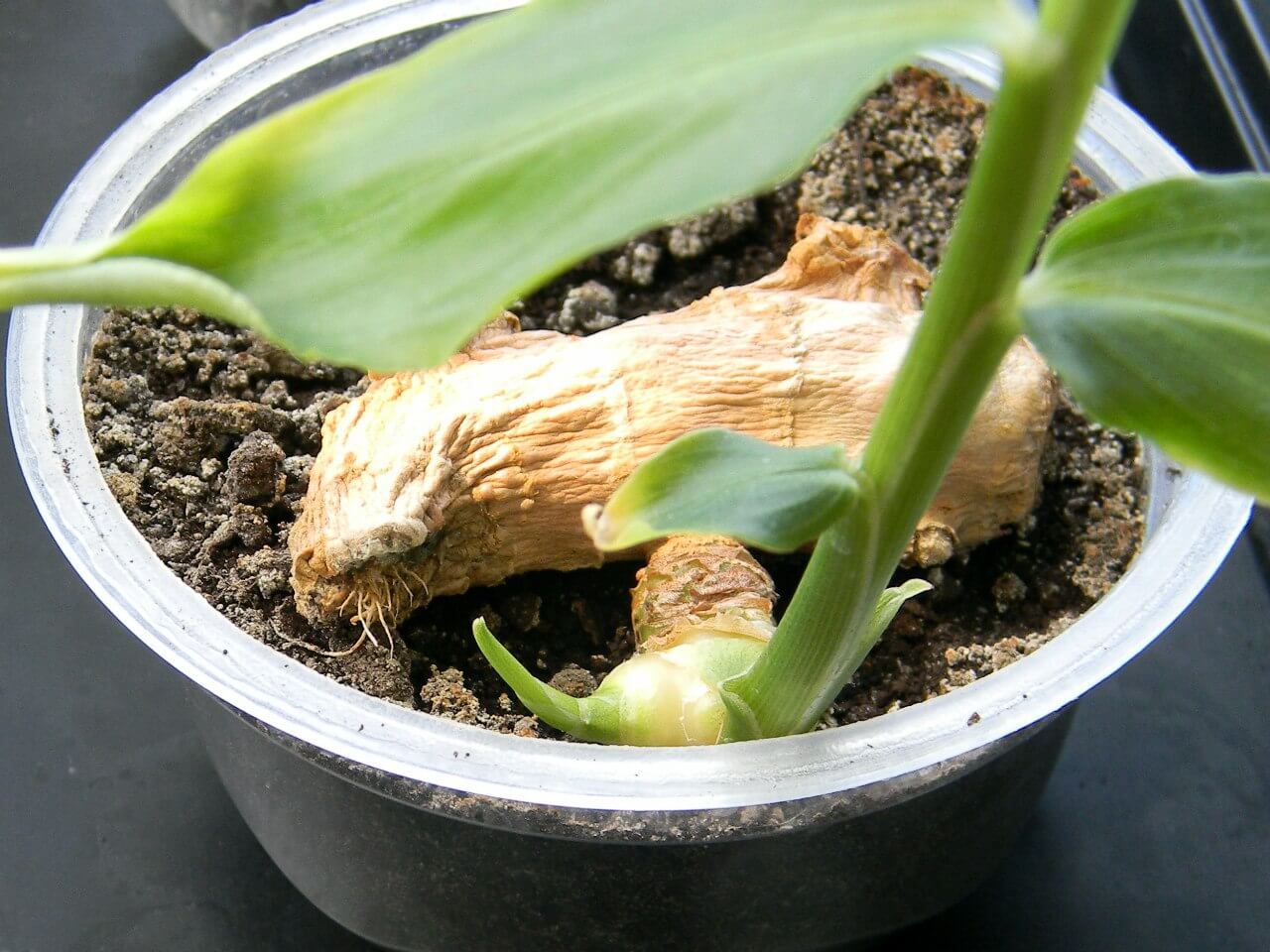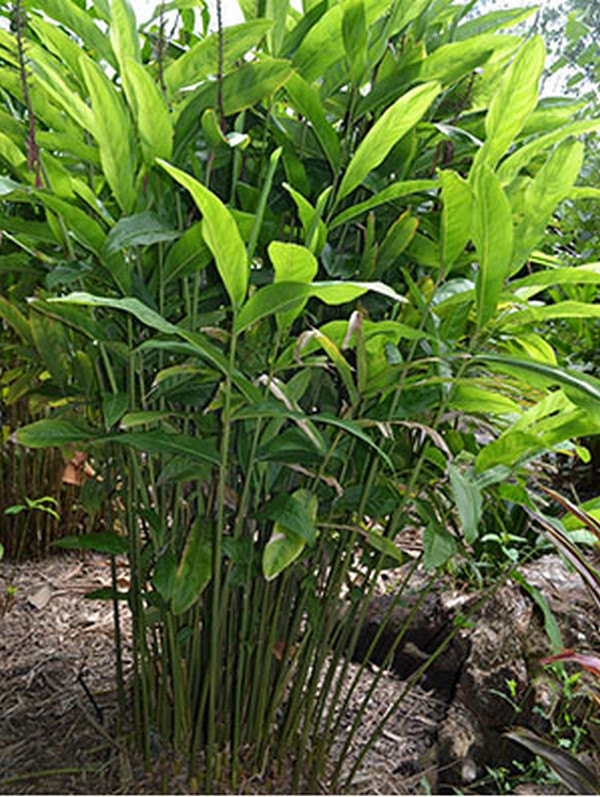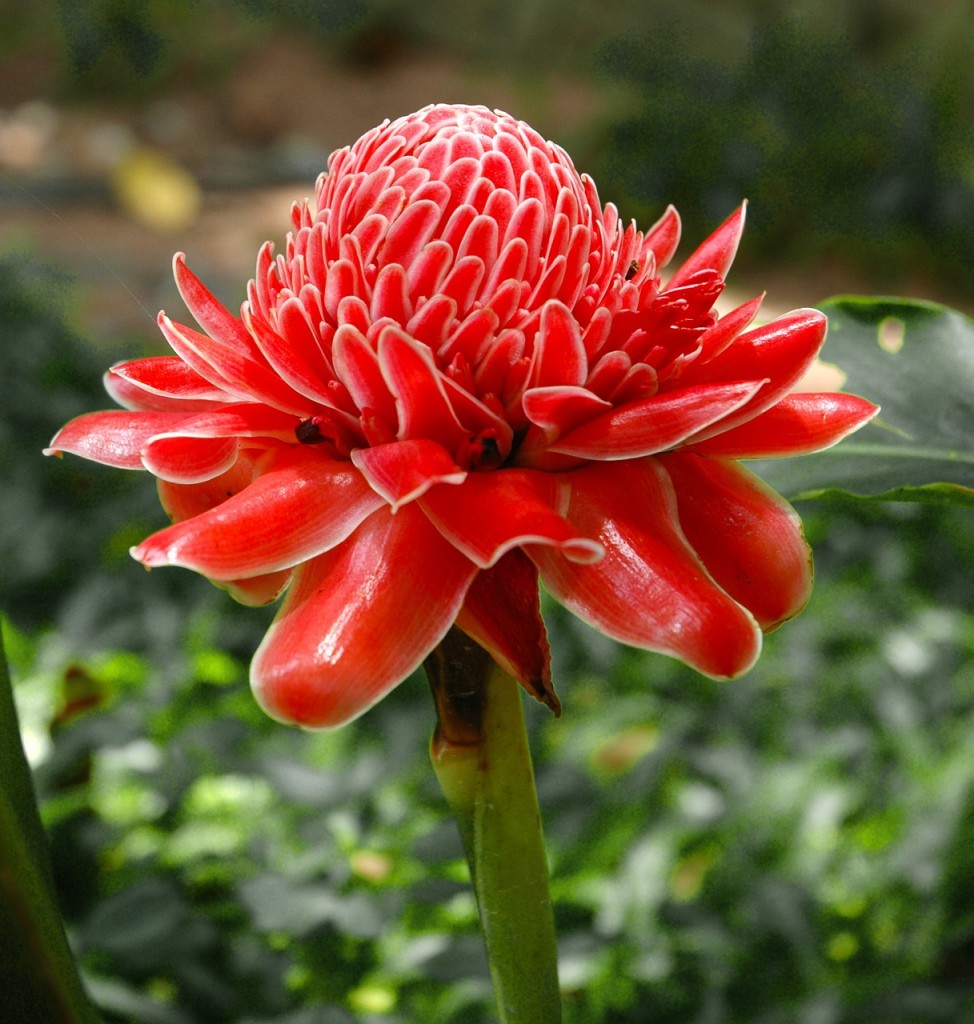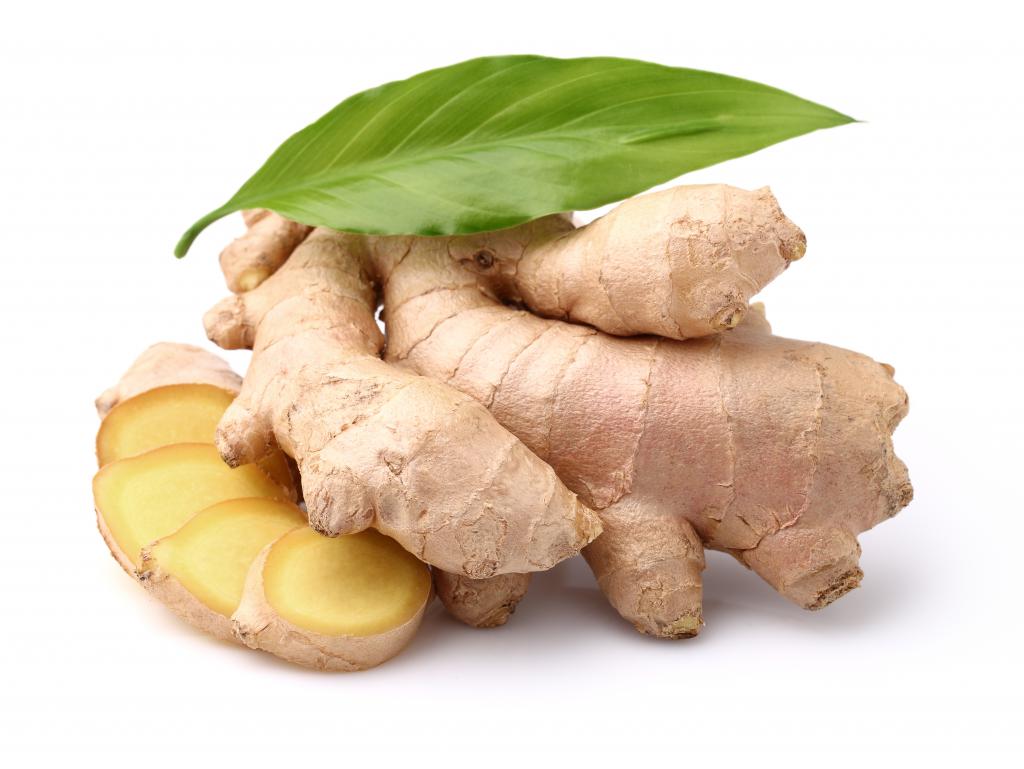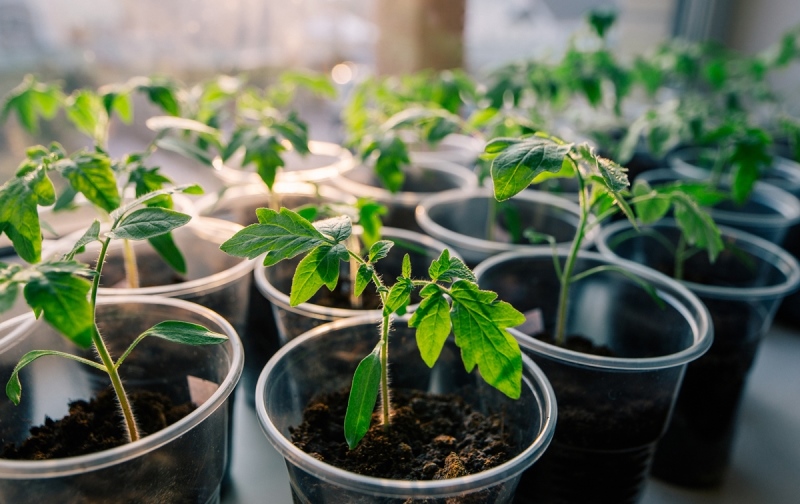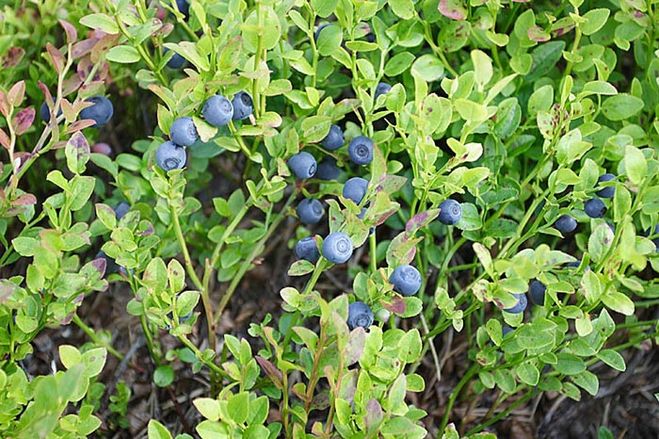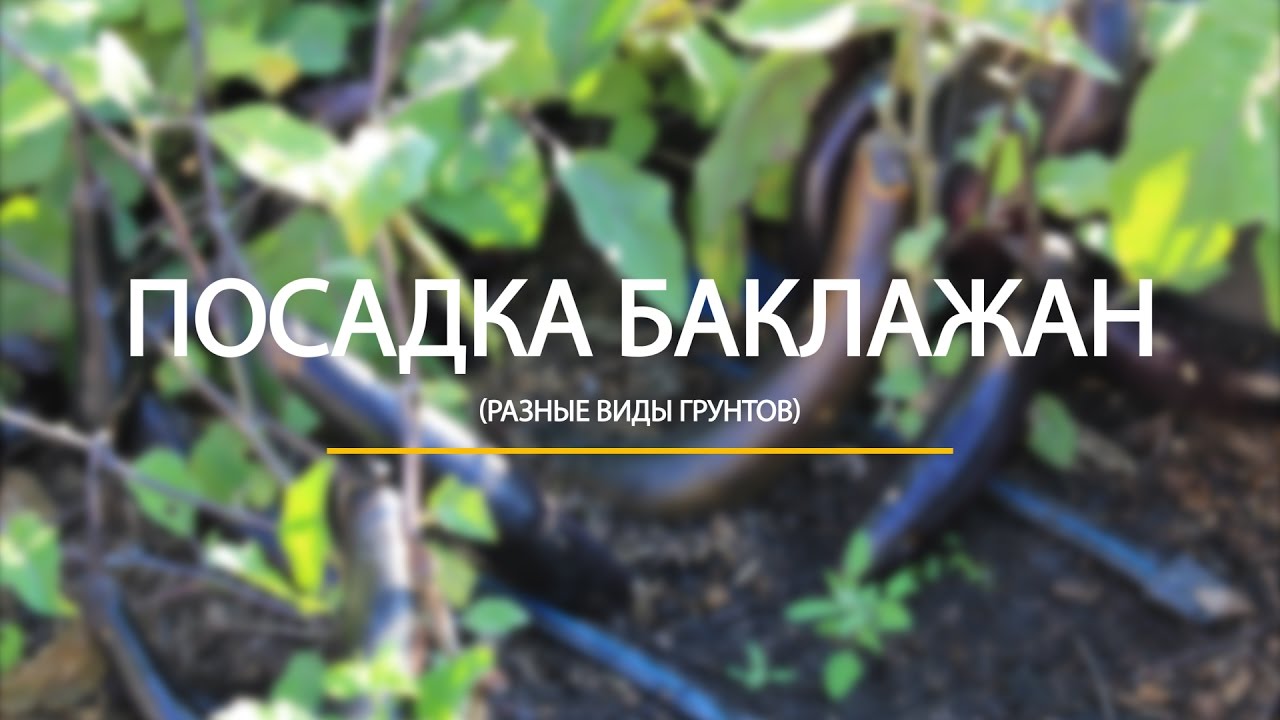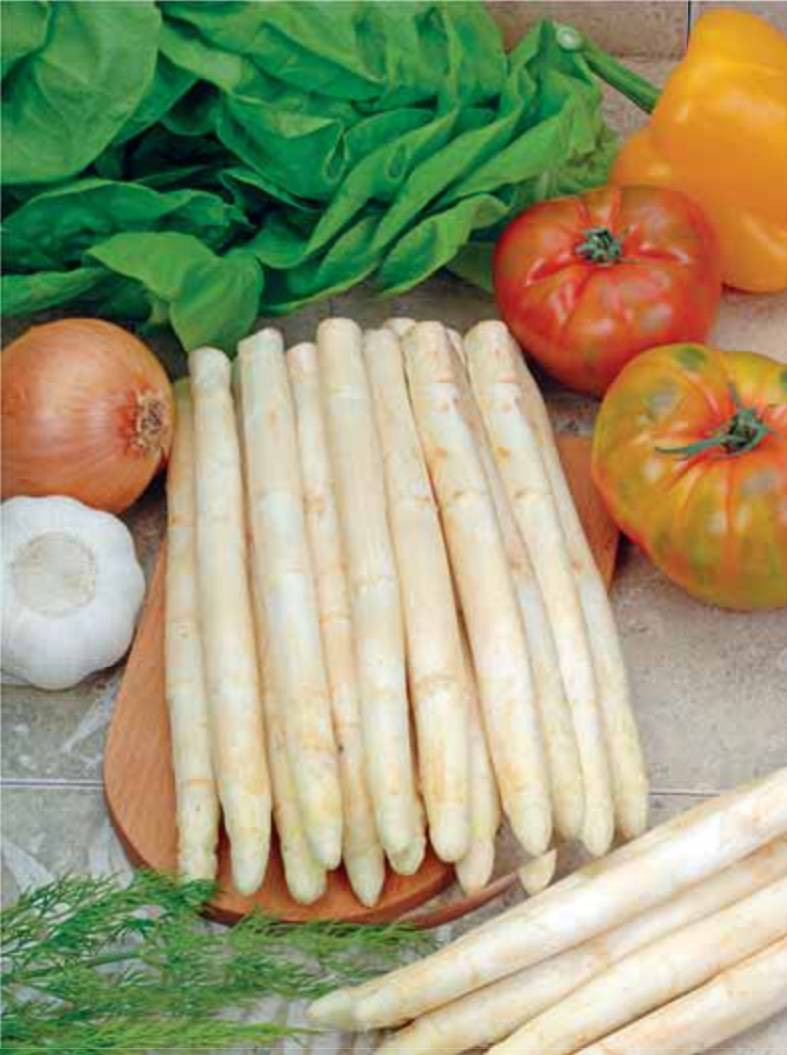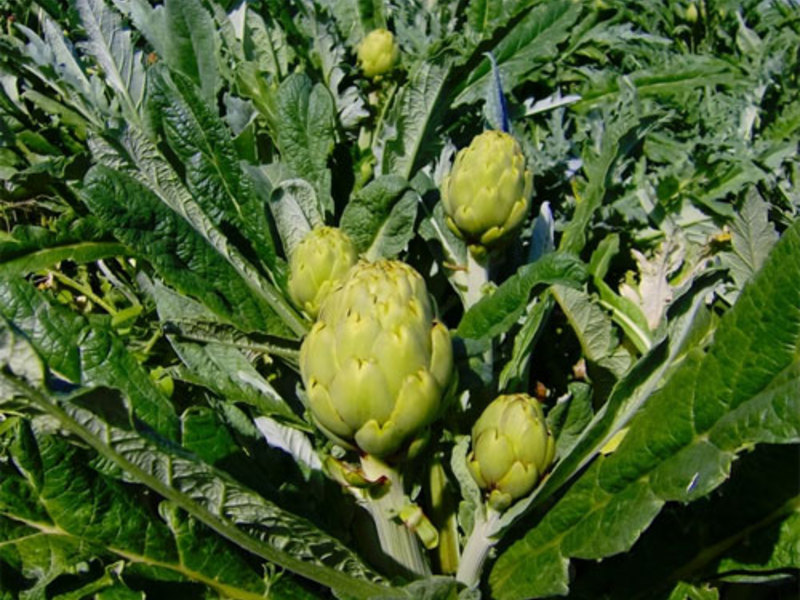Ginger root has long settled in the kitchen and has become an indispensable spice for many dishes. The homeland of ginger is considered to be the South-East Asian countries, where a humid tropical climate prevails, from where it got its distribution in Europe. China and India are pioneers in the cultivation of ginger.
Description of the plant
The plant has the scientific name "Zingiber officinale" - a perennial evergreen shrub. Few have an idea of how ginger grows in the wild - it is a grass up to 1.5 m in height, the leaves are oblong, pointed and rather dense, ginger flowers
look like a spikelet of pink hue, sometimes they are saturated red.
Ginger is a plant that has a whole range of beneficial properties: anti-inflammatory, analgesic, antispasmodic and tonic. Essential oils often form the basis of perfume compositions, thanks to their subtle spicy scent with woody notes. Ginger extract has taken a worthy niche in cosmetology - it is used in the preparation of tonics and creams.
Therefore, growing on an industrial scale is not possible. Special conditions must be created for ginger, so it is cultivated in greenhouses and greenhouses. It is quite possible to grow indoor ginger at home and even in the country in the open field. The nature of Russia, even in the southern regions, is not at all like the humid tropics with high temperatures, this affects the way Russian-made ginger looks like - this is a short bush. Only in the most close to tropical growing conditions can you see the flowering of ginger, so it always becomes a real event for gardeners. In addition, the bud opens only for one day. The ginger flower is lemon-colored in the center and framed by a pink stripe around the edges.
Landing
In order to grow ginger, you need to purchase its root from a regular grocery store, which should look healthy and shiny, it should be firm and firm to the touch. There should be no flaws, dry and damaged roots will not germinate. For additional protection against fungi and parasites, it is necessary to treat with a solution of potassium permanganate.
To prevent the plant from dying from excess moisture and lack of oxygen, you need to take a pot with holes at the bottom or make them yourself. The first layer should be draining; expanded clay from a flower shop, styrofoam, eggshells, or even tangerine peels are suitable. Humus is laid on the drainage in a thin layer, then the main layer of soil goes, you do not need to fill the pot to the brim, a couple of centimeters should remain. A hole is made in the ground and the root is placed there; it should not stick out of the pot. Now you need to add soil to the full volume of the pot.
For root germination, several rules must be followed:
- Watering should be moderate, in small doses, after the soil dries out. Waterlogging has a detrimental effect on the plant;
- Top dressing will accelerate the growth of shoots. Top dressing with potassium has a beneficial effect on the development of the root system. Fertilization with ammonium nitrate provides nutrition to the plant. Frequency - 2 times a week, alternating. The first is preferable to make potash top dressing;
- The plant does not like bright light and direct sunlight, so it is better to place the pot on the north side. In the absence of such an opportunity, the plant must be shaded;
- The plant loves heat very much, so it can be placed near the battery.
After the ginger has sprouted, you can plant it outdoors. This makes sense only if you do a group landing, from 10 pieces or more. A single sprout can continue to grow in a pot.
Planting conditions on the site are the same as in the pot. The main steps are choosing an area that is protected from direct sunlight, for example, where there is a shade from a tree, preparing drainage and soil. The planting holes should be about 5 cm deep, the planting step should be 10 cm. It is important to place the ginger correctly - sprouts up. This ensures the normal development of the plant, since the ginger root system grows in width, not in depth. To protect the roots from temperature extremes at night, you can cover the bed with a covering material, such as perforated film. When the shoots appear, the material can be removed, since the plant needs good lighting for 14 hours a day for normal development.
Care
In order to see blooming ginger, you need to strictly follow agrotechnical techniques and planting dates. In tropical climates, the plant matures in about six months. In central Russia, the period increases by 3-6 months. Most of the time is spent growing the roots. The optimal time for germination is February-March.
Compliance with the water regime allows the roots to germinate faster. Normally, 2 weeks should pass from the moment of planting to the appearance of shoots. After that, watering must be reduced, since excess moisture can provoke rotting of the roots, but it is also impossible to allow the soil to dry out. Ginger is very fond of loose light soil. After watering, loosening the soil is very appropriate, but you need to observe the measure, the optimal depth is 1 cm. During the entire growing season, these procedures allow the plant to grow faster. In dry weather, you need to spray the leaves, but only in the morning and evening. Daily irrigation causes leaf burns.
Outdoors, ginger reacts well to organic fertilizers. In addition to potassium-nitrogen dressings, you can add a solution of mullein with water in a ratio of 1:10. Organic matter should be applied once every 1.5-2 weeks. In order to see how ginger blooms in a summer cottage, you must also add phosphorus fertilizers.
If the ginger is grown for decorative purposes, then you do not need to dig it up.
Ginger can also be moved to a pot and brought into the house for the winter by placing it near the battery. If necessary, you can dig up young tubers for consumption.
The formation of ginger roots begins in August. At this time, the plant no longer needs careful care. In autumn, shoots die off, and this is the first sign that you can start harvesting.
Harvesting and storage rules
Watering should be stopped 10 days before harvesting so that the stems dry out and bent to the ground.
Harvesting rules:
- The bush must be removed from the ground along with an earthen clod. This is necessary in order not to damage the roots, since during the season they grow very much in width;
- With your hands, gently remove all the soil from the roots;
- Remove the planting root;
- Cut off the stems;
- Rinse the young crop in water.
Ginger can be eaten straight away or prepared for storage. The organization of storage should be aimed, first of all, at maintaining the elasticity, meatiness of ginger and retaining moisture in the root.
The storage space must meet the following requirements:
- Air temperature - + 10˚С-15 С˚;
- Humidity - 65-70%;
- Lack of sunlight.
If these points are observed, then ginger will retain its shape and beneficial properties for another six months. Before storing the ginger, let it sit in the sun to dry the skin. The carefully dried roots are wrapped in parchment paper.
If you plan to use the roots only for cooking, you can store them in the freezer. To do this, they need to be rinsed, cleaned, divided into portions, wrapped in plastic wrap or a vacuum bag and stored. It is very convenient to get the required amount, you do not need to bother with cutting the root every time. The shelf life of ginger when stored in a freezer is 3 months.
For this you need:
- Wash and dry the roots thoroughly;
- Cut into thin translucent circles;
- Place on a baking sheet lined with parchment paper;
- Preheat the oven to 50 ˚С and keep the ginger for 1 hour;
- Turn each circle over and leave in the oven for the same period;
- Transfer the ginger to a glass jar and close the airtight lid. The jar can be stored in a cabinet or refrigerator. Before use, the ginger circles are poured with boiling water, after which they can be eaten.
Pickling ginger is another long-term storage method that is considered a seasoning. The peeled ginger should be rubbed with sea salt and left overnight. In the morning, the root is washed and cut into longitudinal pieces.
Next, the marinade is infused for 1 hour:
- 100 g vinegar (2%),
- 2 tbsp red wine,
- 2 tbsp Sahara,
- 1 tsp salt.
The roots are poured with marinade and removed to a dark, cool place for 7 days.
Basic Tips
- Ginger must be protected from draft and wind;
- In dry weather or when grown at home, ginger needs to be sprayed;
- During the season, you need to loosen the soil at least 4 times;
- To obtain the maximum effect of feeding, you need to alternate;
- In October, watering should be minimized;
- Harvesting should begin immediately after the leaves turn yellow;
- To prevent spoilage, the crop must be dried in the sun.
Despite the fact that ginger is a tropical plant, it is quite possible to grow it in a region with a temperate climate. The crop will be slightly smaller than imported, but this does not mean lower quality. This is a feature of culture in colder climates. But in just 1 season, the plant will delight you with a fresh, healthy harvest with a delicate lemon aroma, the taste of which is in no way inferior to the roots brought from the tropics.

